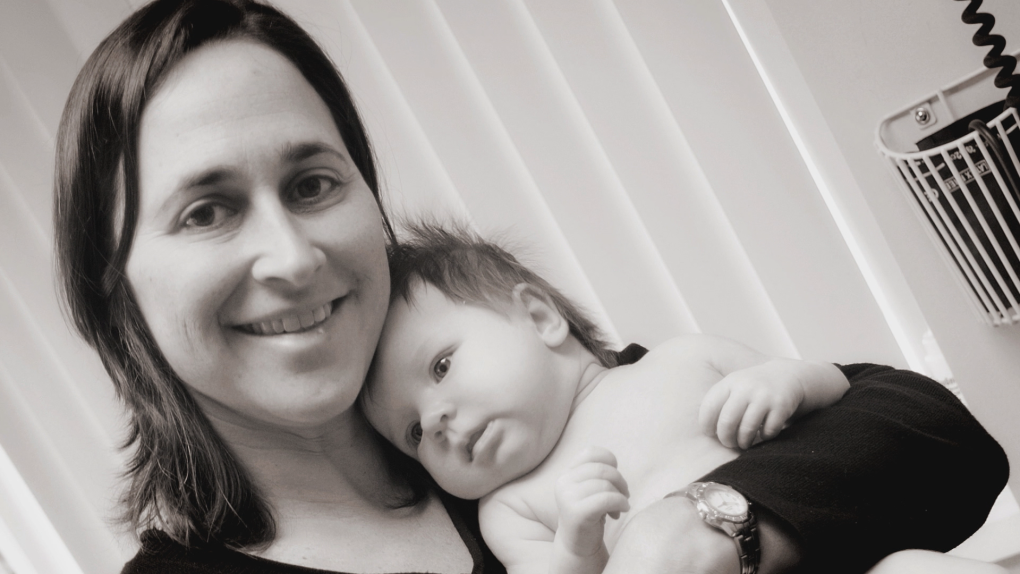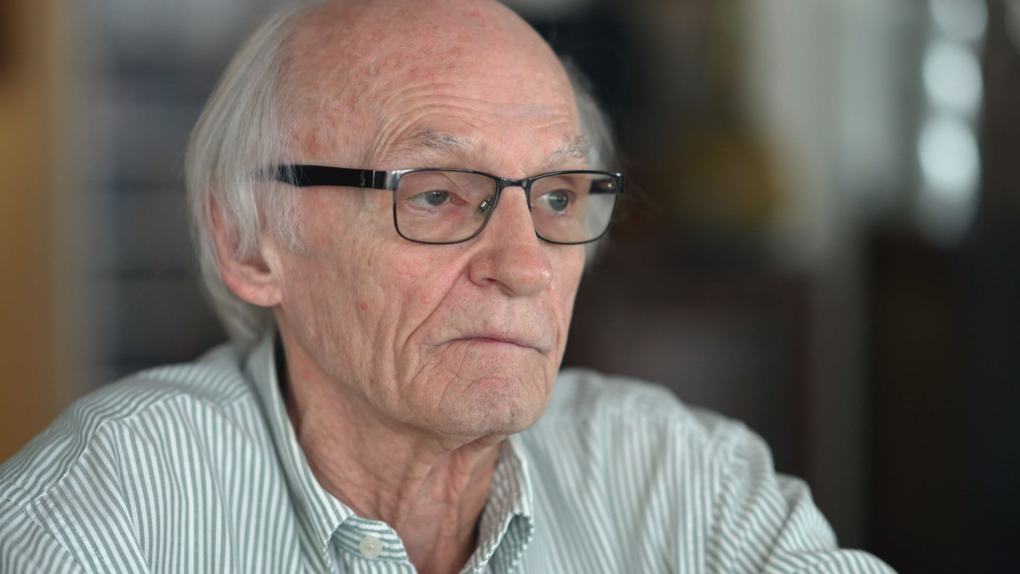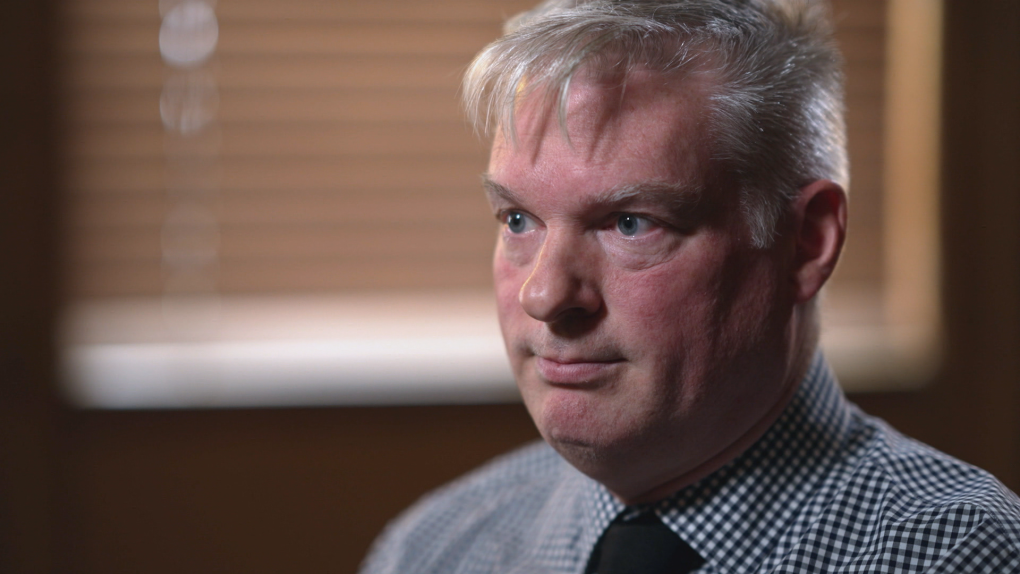A rare look at Canada's growing demand for medical assistance in dying
Few Canadians have seen what assisted dying looks like, even though it’s a legal medical procedure with steadily growing numbers across the country.
So Dr. Stefanie Green is opening her practice, offering an intimate look at this new area of medicine, because -- sooner or later -- dying is a part of everyone's life.
"People should know about this," said Dr. Green near her home in Victoria, B.C. "Pull the curtain back. Here is what I do."
The family physician spends 90 per cent of her work day helping patients die.
She's also just written an eye-opening book, This is Assisted Dying, the first in Canada on what it's like to specialize in death.
And she’s allowing W5 exclusive access to follow her and meet her patients as she helps them end their lives.
"This is legal medical care in this country. There’s nothing clandestine about what I do. It should not be done behind closed doors or in secret," said Dr. Green.
From birth to death
When Medical Assistance in Dying, dubbed MAiD, became legal in Canada in 2016, Dr. Green was exhausted from 20 years of doing maternity work and was looking for a change.
"It had become harder for me, just physically, to be doing 24-hour call shifts and to be coming home so tired and then taking a day to recover from that.”
So, she switched from beginning-of-life care to end-of-life care.
"One's a delivery in. One's a delivery out," said Dr. Green. "They're similar in terms of they're both incredibly intimate moments. They're milestones in someone's life. They are intense."
 Dr. Stefanie Green switched from beginning-of-life care to end-of-life care (Supplied photo)While most physicians initially shied away from performing medically assisted deaths, Dr. Green said she was drawn to it by a combination of curiosity and skepticism.
Dr. Stefanie Green switched from beginning-of-life care to end-of-life care (Supplied photo)While most physicians initially shied away from performing medically assisted deaths, Dr. Green said she was drawn to it by a combination of curiosity and skepticism.
It jelled for her at an international meeting on assisted death in Amsterdam, a few months before MAiD became legal in Canada.
"I thought maybe it would be a little bit kooky, but I was amazed at the professionalism that I encountered. I met people from all over the world -- people who had provided this care. Clinicians with experience, researchers who had 20 years of experience documenting the statistics," she said. "It really called to me."
Her book details her medical and mental journey assessing patients like Ray Cole.
The 72-year-old has lung cancer and is hanging on with painkillers.
“It's very poor quality of life. I get up, I go to the can. I get back, go to bed, get up, go to the can, get back, go to bed," said Ray from his home on Vancouver Island. "If I was a dog or a horse, I would put me to sleep, OK? I wouldn't let my dog suffer."
 Ray Cole (right), a 72-year-old Vancouver Island man with lung cancer, talks to W5 about why he's chosen a medically-assisted death. Cole had to apply for the right to die. Dr. Green and a second physician agreed that he met the criteria as a Track One patient under the law, meaning his death was "reasonably foreseeable."
Ray Cole (right), a 72-year-old Vancouver Island man with lung cancer, talks to W5 about why he's chosen a medically-assisted death. Cole had to apply for the right to die. Dr. Green and a second physician agreed that he met the criteria as a Track One patient under the law, meaning his death was "reasonably foreseeable."
"I've got 10 grandchildren. I got to say goodbye to them all standing up, hug them goodbye. It was wonderful," said Cole.
"I have no regrets. I have no problem with going to the other side," he added. " I'm really… excited because I'm going to know the answer."
His relief was something Dr. Green had seen often when she approves a patient for an assisted death.
"They can stop thinking and worrying about what exactly is going to happen at the end of their life. They can really grab onto those final days or weeks or months that they have left and really focus on living them intently and with purpose," she said. "I'm giving them a gift."
The MAiD Capital of Canada
More and more people on Vancouver Island, like Ray Cole, are choosing medical assistance in dying. About 7.5 per cent of all deaths are MAID. That's three times higher than the national average in Canada which is 2.5 per cent.
Dr. Stefanie Green's book draws attention to this eyebrow-raising statistic.
The island even surpasses assisted death rates in countries such as Belgium and the Netherlands, which hold steady at about 4 per cent, even after decades of providing assisted dying
"We are unusual," admitted Dr. David Robertson. He runs the Maid program on Vancouver Island.
"Is seven-and-a-half per cent the right number? No. It happens to be the right number at the moment for Vancouver Island residents. But it's not something I would wish to translate to any other part of the country. We just provide a service in the way we do, and we find it works for us," said Dr. Robertson.
While no one has officially studied Vancouver Island's high MAID rate, Dr. Robertson pointed to some clues. The island is a retirement destination with its balmy climate often called the 'Hawaii of Canada.' The retirees there are well educated, well-heeled and socially and politically progressive.
“We know that from other research, that people with higher levels of education and higher incomes, tend to choose MAiD more often,” he added.
Another explanation for the high number of MAiD deaths is the fact that the island has more doctors and nurse practitioners per capita willing to provide assisted dying than most other regions in the county.
And finally, the health authority decided that all their hospitals and clinics would never refuse to provide MAiD.
“MAiD is a charter right of Canadian citizens. And it seemed to me with that philosophy…that it was the health authority’s job…to bring the MAiD to the patient,” said Dr. Robertson.
But some wonder about the high rate of assisted dying on the island.
"I do get concerned whenever somebody is, or whenever a place is on the extremes of the bell curve. That makes you wonder what's happening in each of those places," said Dr. Scott Anderson.
Dr. Anderson is an ICU specialist in London, Ont. He not only saves lives, but he also provides assisted dying. He said parts of Ontario have MAiD rates that are less than 1per cent.
The most recent federal report on medical assistance in dying in 2020 said as much. The report highlights regional disparities across Canada that beg the need for “further study…to help clarify differences between access to, and receipt of, MAiD based on geographic location.”
Track Two
In March 2021, a second group of patients were granted the right seek assisted dying. According to the new legislation, people with serious and incurable illnesses or disabilities, but who aren't actually dying, are allowed to ask for death.
 John Priddle, who has a chronic and progressive neurological disorder called Friedreich’s Ataxia, speaks with W5.Sixty-nine-year-old John Priddle is an example of one of these cases, called Track Two cases.
John Priddle, who has a chronic and progressive neurological disorder called Friedreich’s Ataxia, speaks with W5.Sixty-nine-year-old John Priddle is an example of one of these cases, called Track Two cases.
Unlike Ray Cole who is dying of cancer, Priddle has a chronic and progressive neurological disorder called Friedreich’s Ataxia. It affects his speech, his ability to swallow and it makes walking laborious and slow. Once a world traveller with his wife Jacqui, Priddle is now largely housebound.
“I think of it as my world is shrinking.”
A small but growing proportion of patients on Vancouver Island are Track Two cases. Dr. Green has approved a few. But she cautions that in order to qualify people have to have been offered -- and seriously considered -- all care to alleviate their suffering.
Dr. Green assures him that considering all the factors, including John’s 20 years of treatments that failed to stop the progression of his disease, should the time come when he asks for help to die sooner, he would get approved for MAiD.
“There’s a chance you might live many more years, and you’ll excuse me for saying, die from something else,” she told him.
“It’s going to sound really weird, maybe to some, but I think it makes me feel quite a bit relieved,” Priddle told W5.
Only 4 per cent of assisted deaths on Vancouver Island were Track Two cases last year – those who are not imminently dying. It’s a small number. But it’s still much higher than in Ontario, where Dr. Scott Anderson say he and his colleagues have been much more reluctant to approve any Track Two patients because of the complexities of those cases.
“If you look at chronic pain, sometimes the main problem may not even be chronic pain. The main problem may be mental health issues where they have suffered from depression, hopelessness -- just a whole litany of things that come with chronic pain,” said Dr. Anderson.
“Sometimes these patients are vulnerable because they haven’t been able to get proper pain management or homecare services. They express a wish to die. But really, if you flush it out, a lot of them don’t want to die.”
 Dr. Scott Andersen speaks with W5There’s one patient who stays with Dr. Anderson, even though the man was approved for MAiD as a Track One case.
Dr. Scott Andersen speaks with W5There’s one patient who stays with Dr. Anderson, even though the man was approved for MAiD as a Track One case.
"He came to me with depression, a neurologic condition, a variety of other problems, social problems. I did feel he qualified."
But on the day of his procedure. He didn't show up.
"When I tracked him down, he said he was very sorry. But he was at a job interview and couldn't make it," said Dr. Anderson.
“It tells you that a patient’s desire or frustrations or requests for MAiD can fluctuate over time. Once a MAiD has been performed, there’s no going back. So, if we should be anything, we should be overly careful.”
Dr. Green said she’s fully aware of the pitfalls and the variations across the country.
That’s why she helped found the Canadian Association of MAiD Assessors and Providers. One of the group’s goals is to standardize assessments and care across the country. With that in mind, Dr. Green is about to launch the first educational program in Canada for doctors and nurse practitioners interested in providing assisted death.
She hopes the program will help alleviate some of the regional differences.
“A Haligonian in Halifax who wants to have MAiD, who has a certain diagnosis and wants to seek an assessment, is treated with the same type of approach and expertise as someone in Manitoba or British Columbia. I think that’s essential,” said Dr. Green.
The death he wanted
It’s a February morning, Ray Cole's 47th wedding anniversary, when Dr. Green arrives. His wife Deb is being prepared for what she might see when the procedure begins. Dr. Green will administer drugs to sedate -- to numb any pain -- and then to induce a deep coma that stops Ray’s breathing and heart.
"Sorry if it's so raw," Dr. Green says to Deb as they sit in the living room. "You're probably going to see his mouth become a little slack, a little bit open. His lips might turn a little bit blue. He might become quite pale in those first couple of minutes, so all of that's really normal. If you feel kind of uncomfortable seeing that or don't really want to stay there at any point…you can certainly walk out of the room."
Then with a gentle smile Stefanie adds, “There’s no medal for staying.”
They walk into the bedroom where Ray Cole is lying in bed listening to his favourite Kenny Rogers song. Deb lies next to him.
Stefanie hands him the syringe with the first medication.
"I’m good to go?” says Cole.
"Safe travels my friend," says Dr. Green.
"I love you," Ray says as he kissed Deb on the cheek. “I love you too,” she answers back.
"Thank you," Ray says as he looks at Dr. Green.
“It’s been an honour,” Stefanie says reassuringly.
Then Ray himself pushes the first medication into his veins. It doesn’t take long after that.
Dr. Green has helped some 300 people die in the last five years and says she doesn't feel burned out. Quite the opposite.
"When I leave the home of someone I've helped. Of course, I'm sad. Somebody's life has just ended. But I feel like I helped facilitate their final wish."
CTVNews.ca Top Stories

Young people 'tortured' if stolen vehicle operations fail, Montreal police tell MPs
One day after a Montreal police officer fired gunshots at a suspect in a stolen vehicle, senior officers were telling parliamentarians that organized crime groups are recruiting people as young as 15 in the city to steal cars so that they can be shipped overseas.
B.C. judge orders shared dog custody for exes who both 'clearly love Stella'
In a first-of-its-kind ruling, a B.C. judge has awarded a former couple joint custody of their dog.
Man sets self on fire outside New York court where Trump trial underway
A man set himself on fire on Friday outside the New York courthouse where Donald Trump's historic hush-money trial was taking place as jury selection wrapped up, but officials said he did not appear to have been targeting Trump.
Sask. father found guilty of withholding daughter to prevent her from getting COVID-19 vaccine
Michael Gordon Jackson, a Saskatchewan man accused of abducting his daughter to prevent her from getting a COVID-19 vaccine, has been found guilty for contravention of a custody order.
Mandisa, Grammy award-winning 'American Idol' alum, dead at 47
Soulful gospel artist Mandisa, a Grammy-winning singer who got her start as a contestant on 'American Idol' in 2006, has died, according to a statement on her verified social media. She was 47.
She set out to find a husband in a year. Then she matched with a guy on a dating app on the other side of the world
Scottish comedian Samantha Hannah was working on a comedy show about finding a husband when Toby Hunter came into her life. What happened next surprised them both.
'It was joy': Trapped B.C. orca calf eats seal meat, putting rescue on hold
A rescue operation for an orca calf trapped in a remote tidal lagoon off Vancouver Island has been put on hold after it started eating seal meat thrown in the water for what is believed to be the first time.
Shivering for health: The myths and truths of ice baths explained
In a climate of social media-endorsed wellness rituals, plunging into cold water has promised to aid muscle recovery, enhance mental health and support immune system function. But the evidence of such benefits sits on thin ice, according to researchers.
'It could be catastrophic': Woman says natural supplement contained hidden painkiller drug
A Manitoba woman thought she found a miracle natural supplement, but said a hidden ingredient wreaked havoc on her health.
Local Spotlight

UBC football star turning heads in lead up to NFL draft
At 6'8" and 350 pounds, there is nothing typical about UBC offensive lineman Giovanni Manu, who was born in Tonga and went to high school in Pitt Meadows.
Cat found at Pearson airport 3 days after going missing
Kevin the cat has been reunited with his family after enduring a harrowing three-day ordeal while lost at Toronto Pearson International Airport earlier this week.
Molly on a mission: N.S. student collecting books about women in sport for school library
Molly Knight, a grade four student in Nova Scotia, noticed her school library did not have many books on female athletes, so she started her own book drive in hopes of changing that.
Where did the gold go? Crime expert weighs in on unfolding Pearson airport heist investigation
Almost 7,000 bars of pure gold were stolen from Pearson International Airport exactly one year ago during an elaborate heist, but so far only a tiny fraction of that stolen loot has been found.
Marmot in the city: New resident of North Vancouver's Lower Lonsdale a 'rock star rodent'
When Les Robertson was walking home from the gym in North Vancouver's Lower Lonsdale neighbourhood three weeks ago, he did a double take. Standing near a burrow it had dug in a vacant lot near East 1st Street and St. Georges Avenue was a yellow-bellied marmot.
Relocated seal returns to Greater Victoria after 'astonishing' 204-kilometre trek
A moulting seal who was relocated after drawing daily crowds of onlookers in Greater Victoria has made a surprise return, after what officials described as an 'astonishing' six-day journey.
Ottawa barber shop steps away from Parliament Hill marks 100 years in business
Just steps from Parliament Hill is a barber shop that for the last 100 years has catered to everyone from prime ministers to tourists.
'It was a special game': Edmonton pinball player celebrates high score and shout out from game designer
A high score on a Foo Fighters pinball machine has Edmonton player Dave Formenti on a high.
'How much time do we have?': 'Contamination' in Prairie groundwater identified
A compound used to treat sour gas that's been linked to fertility issues in cattle has been found throughout groundwater in the Prairies, according to a new study.















































